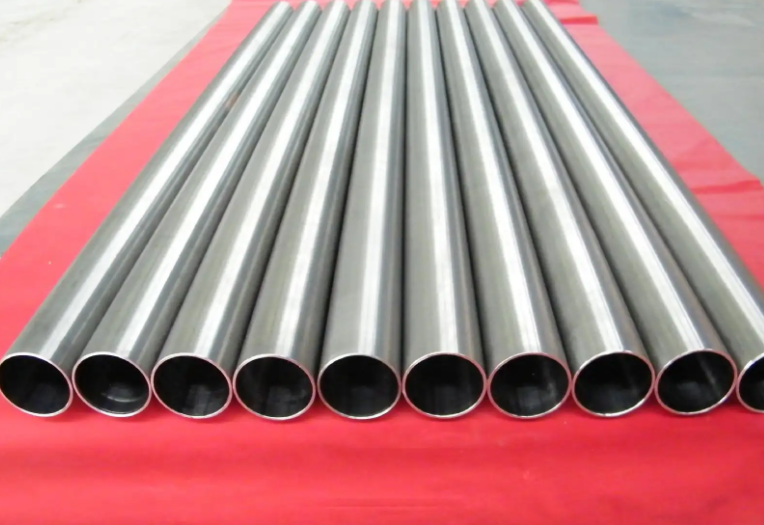Detect the discontinuity defects of titanium and titanium alloy pipes. When the inspected pipes pass through the through-type detection coil (probe), detect whether the pipes have defects according to the electromagnetic induction changes of the measuring coil (probe). Point coil if necessary.
Titanium alloy pipe is made of titanium alloy pipe. titanium alloy can be divided into three categories according to the organization. Aluminum and tin are added to titanium. Alloy elements such as aluminum, chromium, molybdenum and vanadium are added to titanium. 3 Aluminum and vanadium are added to titanium.) They have superior mechanical properties, excellent stamping performance, and can be welded in various forms, welding joint strength can reach 90% of the strength of the matrix metal, and decent machining performance. Titanium tube has superior corrosion resistance to chloride, sulfide and ammonia. The corrosion resistance of titanium in seawater is higher than that of aluminum alloy, stainless steel and nickel-based alloy. Titanium water impact resistance is also strong.
Titanium alloy can be divided into heat resistant alloy, extreme strength alloy, corrosion resistant alloy (Ti-Mo, Ti-palladium alloy, etc.), low temperature alloy and special function alloy (Ti-iron hydrogen storage material and Ti-nickel memory alloy).
The inner and outer surfaces of the Welded Titanium Tube to be tested shall be immaculate, free of dirt, grease, metal chips and other foreign substances that may hinder the inspection, and free from burrs at the end of the tube. The cleaning method used for the pipe and the surface preparation before the inspection shall not damage the surface of the pipe. The bending degree, surface roughness, and dimensional tolerance of the pipe shall meet the inspection requirements.

Inspection equipment:
· Eddy current flaw detector
Eddy current detector should be able to excite the probe coil with a certain frequency of alternating current, and can reliably detect the shift of the electromagnetic induction signal of the coil, has a certain anti-interference ability, can work stably for a long time, and in the effective calibration period.
The instrument shall include excitation, receiving amplification, phase regulation, filtering and other units, and have alarm, display and recording devices.
· Probe
Through the coil probe or point probe combined with eddy current detector, we should be able to generate induced current in the tube wall, and can detect the change of the electrical characteristics of the pipe.
· Mechanical transmission device
The mechanical transmission device shall ensure that the pipe passes through the probe evenly and smoothly, shall not cause damage to the surface of the pipe, shall not have vibration affecting the detection signal, and shall have a regulating mechanism that the center of the probe coil is consistent with the center of the detected pipe. The feeding speed of pipes ranges from 1 m/min to 80 m/min. The selected speed should vary by no more than 10%.
Evaluation of inspection results:
If no alarm signal is found after inspection or the defect record amplitude is lower than the standard alarm amplitude, the pipe shall be judged qualified.
The defect whose alarm signal or defect record amplitude is greater than or equal to the standard alarm amplitude is found through inspection is not allowed.
Any pipe with disallowed defect signal within the length specified in the contract shall be judged as unqualified.
If the pipes fail to pass the inspection, they can be treated again and then inspected again. If the pipes pass the inspection again, they can be judged as qualified.